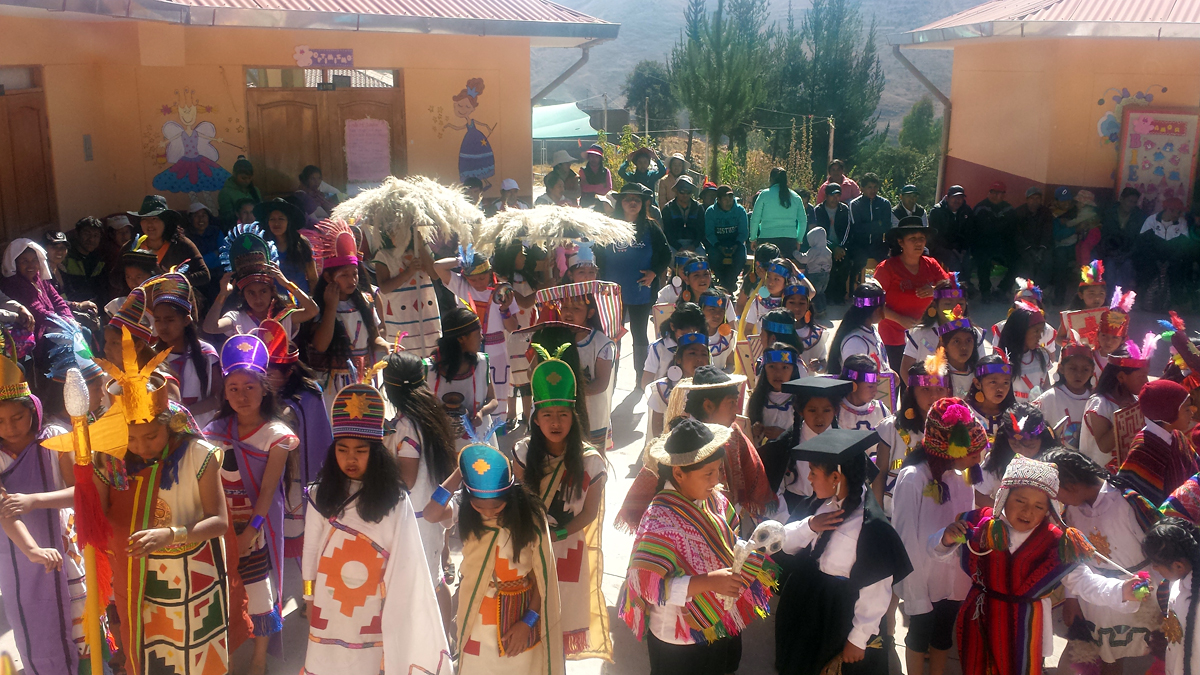
Mission
The Chicuchas Wasi School for Girls promotes gender equality, self-esteem and human dignity for indigenous girls of rural Cusco, Peru by educating, empowering and preparing them for economic independence and unlimited opportunity.
Life Challenges of the Women Served
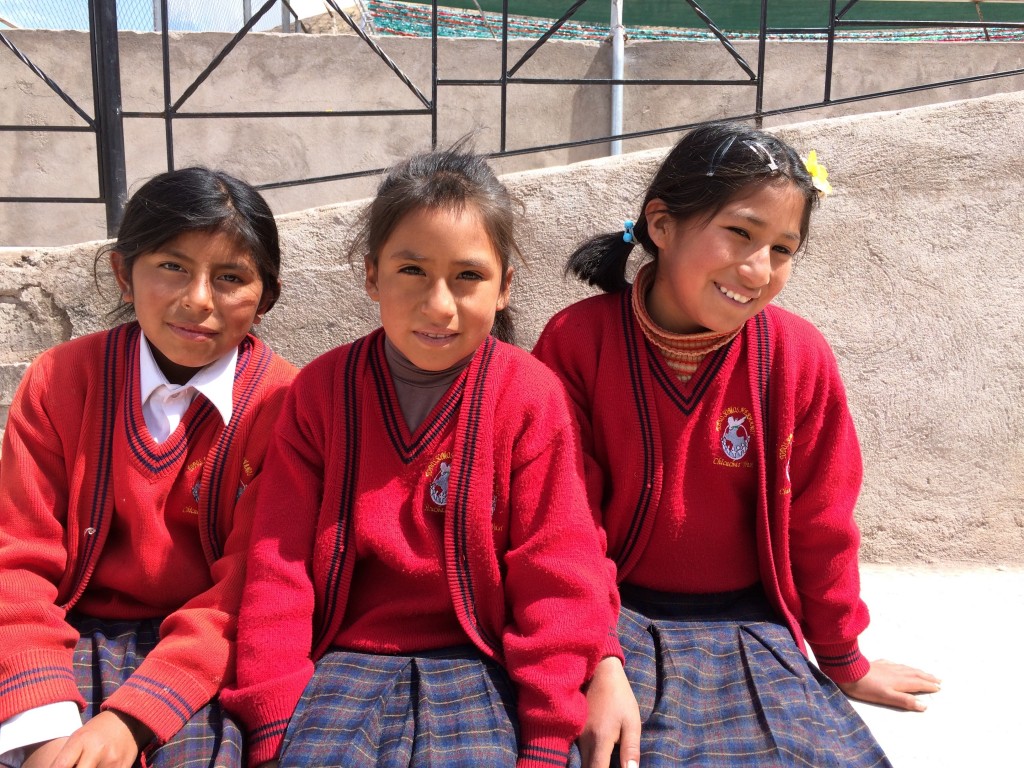 The people of rural Cusco, Peru, live in stark poverty and experience innumerable hardships, resulting in entire families without schooling, being malnourished and in poor health. Approximately two out of three children under 18 live below the poverty line, leading to a high child mortality rate, inaccessible healthcare and an increased incidence of child labor. Social services are few and inadequate for the needs of the outlying communities, with no public food kitchens or nonprofit soup kitchens in the area. Many families live in one room, sleep on a mattress or sheepskin on the packed earth floor and have no utilities or water. The cycle of poverty continues generation after generation, compromising healthy growth and development and sometimes resulting in reduced brain development and learning capacity.
The people of rural Cusco, Peru, live in stark poverty and experience innumerable hardships, resulting in entire families without schooling, being malnourished and in poor health. Approximately two out of three children under 18 live below the poverty line, leading to a high child mortality rate, inaccessible healthcare and an increased incidence of child labor. Social services are few and inadequate for the needs of the outlying communities, with no public food kitchens or nonprofit soup kitchens in the area. Many families live in one room, sleep on a mattress or sheepskin on the packed earth floor and have no utilities or water. The cycle of poverty continues generation after generation, compromising healthy growth and development and sometimes resulting in reduced brain development and learning capacity.
Parents without schooling do not see education as a key to opening the door out of poverty. Public education is free in Peru, but still out of reach for families surviving on $1 (US) a day who cannot afford the fees and school supplies. The prevailing custom favors education for boys and domestic chores for girls. Most rural indigenous girls speak only their native Quechua language, which is not valued in public schools where Spanish is spoken. In addition, cultural beliefs lead mothers and grandmothers to teach their girls that an education is unimportant. Instead, girls are encouraged to find a man who will provide for them. Unfortunately, these girls often end up leading lives of servitude, fully dependent on a male provider and at constant risk of hunger, abuse, lifelong poverty and teen motherhood. Child abandonment, alcoholism, domestic violence and depression with few available services are common.
Like formal schooling, access to adequate nutrition is seriously lacking for rural Peruvians in Cusco. Girls able to attend the Chicuchas Wasi school often enter lethargic and hungry, and have weakened immune systems. Tuberculosis and anemia are not uncommon diagnoses. As a result, the availability of healthy, nutritious food is imperative for girls to thrive and succeed at school.
Save
The Project
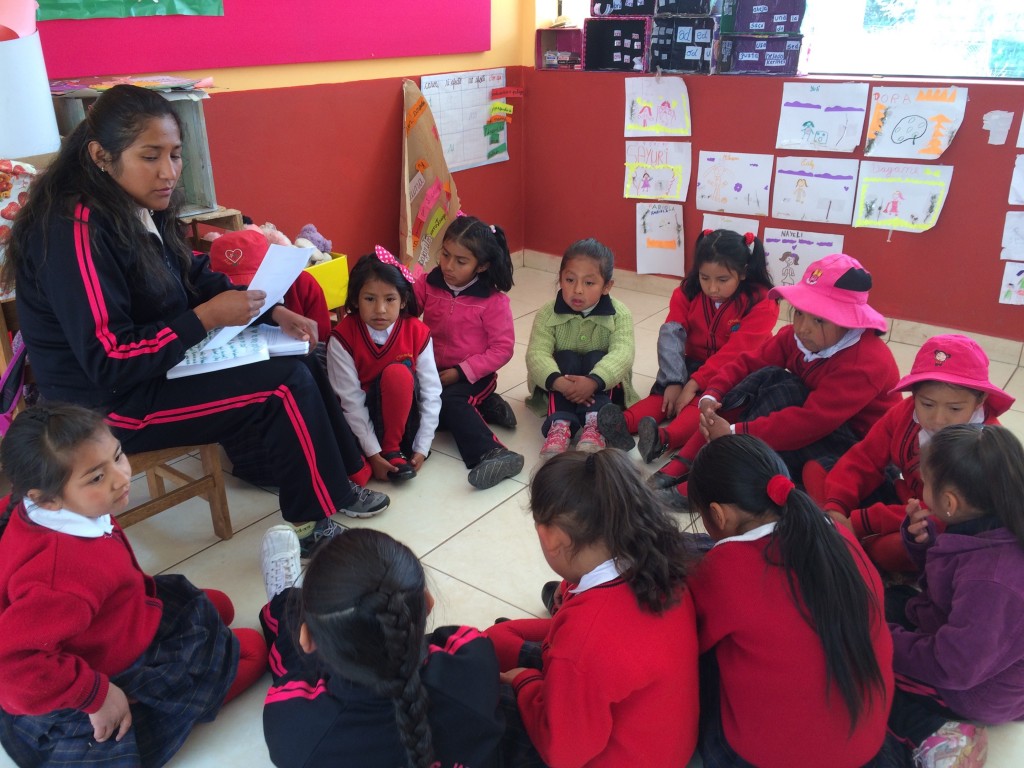 Cusco’s Chicuchas Wasi (CW) School for Girls provides free education and enhanced nutrition and health for girls ages 4 – 12, emphasizing personal empowerment and leadership training. It is the only school for uneducated, poor, Quechua-speaking girls. CW prepares girls to become future leaders for social change, to end gender inequality, malnutrition, female abuse and child abandonment. With their academic success, CW girls are already changing cultural beliefs. The school served 112 girls in 2016, plus their 100 mothers and 55 fathers, stressing personal values and integrity, confidence, self-expression and social responsibility for a quality life of dignity, equality and economic independence. Enrollment is limited to the girls most at risk and families most in need. The goal is for these girls to graduate from CW and continue on with high school. CW employs a staff of 17, including eight full-time teachers, two half-time teachers, a director and assistant director, two cooks, one bus driver, one secretary and one female security guard.
Cusco’s Chicuchas Wasi (CW) School for Girls provides free education and enhanced nutrition and health for girls ages 4 – 12, emphasizing personal empowerment and leadership training. It is the only school for uneducated, poor, Quechua-speaking girls. CW prepares girls to become future leaders for social change, to end gender inequality, malnutrition, female abuse and child abandonment. With their academic success, CW girls are already changing cultural beliefs. The school served 112 girls in 2016, plus their 100 mothers and 55 fathers, stressing personal values and integrity, confidence, self-expression and social responsibility for a quality life of dignity, equality and economic independence. Enrollment is limited to the girls most at risk and families most in need. The goal is for these girls to graduate from CW and continue on with high school. CW employs a staff of 17, including eight full-time teachers, two half-time teachers, a director and assistant director, two cooks, one bus driver, one secretary and one female security guard.
Students at CW enjoy:
- Curriculum set by the Ministry of Education
- Enhanced curriculum that emphasizes female empowerment and self-esteem
- A close-knit group of passionate teachers dedicated to quality education for girls and who employ a unique interactive style of teaching in all six primary grades
- Improved nutrition: Students and parents attend classes to learn what constitutes good nutrition and participate in planting vegetables. CW raises small animals for an animal protein source to combat anemia and a weakened immune system. Nutritious daily hot meals are provided for all students, and oatmeal is provided for half the students, who arrive to school hungry. For many, this is their only daily nourishment.
- Built-in electives such as hygiene, civics, art, dance, poetry and protecting the environment by recycling, water conservation, planting trees and trash control
- Foreign language: students are expected to communicate in Spanish, English and Quechua by the end of sixth grade
- A significant presence in the community: CW students participate in community events, parades, cultural celebrations and demonstrations supporting civic issues and women’s issues to spread the message that educating girls is important.
- Money management skills: skills training includes pretend shopping in a classroom grocery store, and mini-micro loans are made through the school administration so that the mothers learn about small business management, how to count, organize, budget and pay back the loan.
- School uniforms, textbooks and school supplies
- Dental care
- A school psychologist on call for emergencies also provides regular sessions with students, teachers and parents to improve communication and reduce domestic conflict at home
- Semi-annual home visits by teachers to evaluate the quality and condition of student home life
- Daily bus transportation to and from school, which has resulted in a 99 percent attendance rate.
- Continuing education for teachers and administrators
![]()
![]()
![]()
![]()
![]()
Save
Questions for Discussion
- Why is it important for the students’ mothers and fathers to be included?
- What are some of the specialized skills a CW teacher might possess?
- What will be the long-term effect of educating these girls?
How the Grant Will be Used
DFW’s $50,000 grant will cover $35,000 of Chicuchas Wasi’s competitive teacher salaries and $15,000 of the food program for two 10-month school years.
- The teacher/director salaries, including taxes, vacations and pensions.
- The food program, including salaries for a cook and cook’s assistant, taxes, food ingredients and propane gas.
Direct Impact: 112 girls; Indirect Impact: 105 mothers

Save
Why We Love This Project/Organization
We love this project because through education and improved nutrition it creates economic opportunity and gender equality for poor, rural, indigenous girls who would otherwise lead lives of servitude and challenges.
Evidence of Success
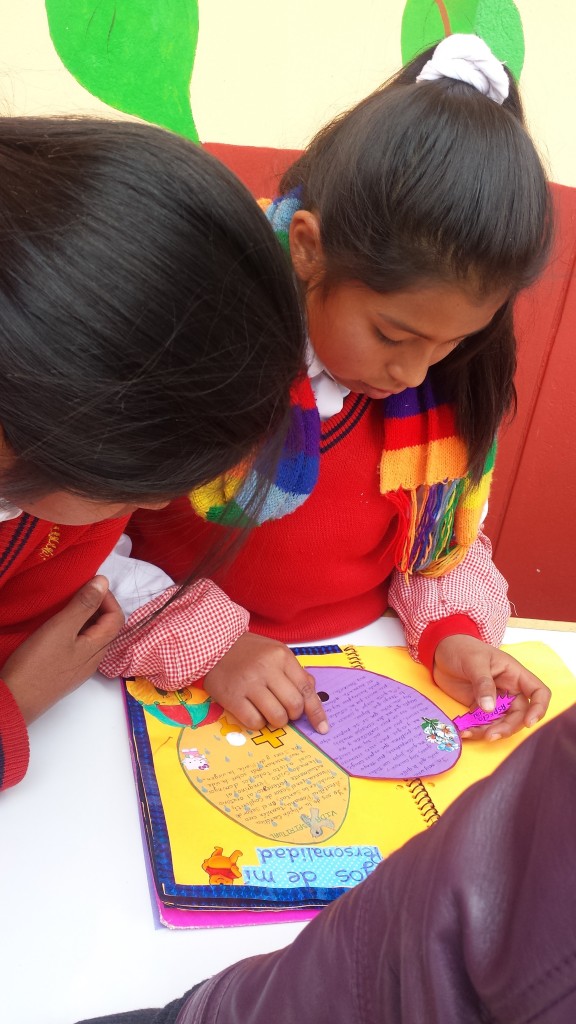 CW has 29 consecutive years of hands-on experience and success serving the poor children of Cusco. In 1997, CW created the School for Girls and received accreditation by the Ministry of Education. The first year there were 13 four-year-olds. Enrollment has increased every year thereafter. In 2012, a new primary school was opened to almost full enrollment. The 19 graduates from 2013 and 2014 and 11 graduates from 2015 have continued on to high school. Five of the nine 2013 graduates were recognized as the highest achievers and were noted for their leadership skills. The staff has gained the trust of parents and single mothers and seen an increase in parental involvement. CW’s robust, all-encompassing curriculum has enhanced the health, vitality and lives of the students, and resulted in parental and student pride. Recently, CW created the Alumnae Sisterhood to mentor the new graduates and younger girls.
CW has 29 consecutive years of hands-on experience and success serving the poor children of Cusco. In 1997, CW created the School for Girls and received accreditation by the Ministry of Education. The first year there were 13 four-year-olds. Enrollment has increased every year thereafter. In 2012, a new primary school was opened to almost full enrollment. The 19 graduates from 2013 and 2014 and 11 graduates from 2015 have continued on to high school. Five of the nine 2013 graduates were recognized as the highest achievers and were noted for their leadership skills. The staff has gained the trust of parents and single mothers and seen an increase in parental involvement. CW’s robust, all-encompassing curriculum has enhanced the health, vitality and lives of the students, and resulted in parental and student pride. Recently, CW created the Alumnae Sisterhood to mentor the new graduates and younger girls.
CW’s aim remains the same: to empower girls and women, to give them the tools for economic independence, to eliminate abuse and oppression, to end child abandonment and to prepare girls to be future leaders.
Save
Voices of the Girls
CW school is my dream and it is where I have the opportunity to teach these girls to be better women and better people. It [education] is the only way to have positive change in this country.
– School Founder and Director Ruth Uribe
Our personal experience of having studied in a public school was that we were just another number in the list of students and teachers were focused on academics and nothing more. We understood that quality education was important, but there was no concern for the emotional health of students – this is how it still is with public education in my country. In order to make a difference we understood that comprehensive education was important and needed, and combining academics and an improved positive emotional state would prepare girls to be intelligent women, confident that they are capable of making good decisions. I identify with many of our girls, motherless at a very young age, hoping that in school they will find a loving maternal person – never found in our public schools. CW school is in sharp contrast.
– Assistant Director Gloria Socorro
I love my school because I learn many things. And now that I am going to my school, I want to stay here because of respect and friendship.
– Maria, sixth grade
I like how the teachers teach me, because I learn.
– Sandra, second grade
I like my school very much and this environment for learning and the way the teachers teach us.
– Luz Camila, second grade
CW is like my second home where I joyfully learn to become a good woman when I am grown.
– Jimena, sixth grade
The teachers teach us with dedication and affection and this way they help us learn to give affection to our families. When we are grown we will be good people and successful and respected women.
– Antonela, sixth grade
For me it is very important that they are teaching with affection because that way I can teach my family and learn better.
– Nancy, sixth grade
About the Organization
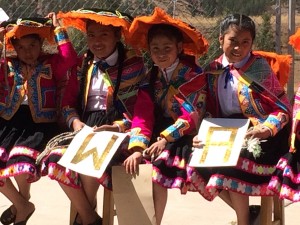 Since its inception by founder Diana Rae Lewis in 1987, Chicuchas Wasi has focused on the human rights violations of abandoned children, some as young as six years old, surviving alone on the streets of Cusco, Peru. CW has been serving Cusco’s indigenous Quechua community ever since, and has become well versed in the underlying causes of child abandonment and poverty in the region. CW first created an emergency residential shelter providing nutritious food, healthcare, education and basic life skills. The organization provided this temporary relief, but did not address the main reason for their suffering: men who abandoned their families, leaving uneducated, unprepared, oppressed and abused women unable to survive economically or to provide for their children. These women could not stand up to abuse and violations against themselves or their children without being given the necessary tools and support. Subsequently, CW’s efforts broadened from supplying shelter to offering an education. As a result, CW’s impact has grown considerably, and it is raising awareness of the importance of educating girls.
Since its inception by founder Diana Rae Lewis in 1987, Chicuchas Wasi has focused on the human rights violations of abandoned children, some as young as six years old, surviving alone on the streets of Cusco, Peru. CW has been serving Cusco’s indigenous Quechua community ever since, and has become well versed in the underlying causes of child abandonment and poverty in the region. CW first created an emergency residential shelter providing nutritious food, healthcare, education and basic life skills. The organization provided this temporary relief, but did not address the main reason for their suffering: men who abandoned their families, leaving uneducated, unprepared, oppressed and abused women unable to survive economically or to provide for their children. These women could not stand up to abuse and violations against themselves or their children without being given the necessary tools and support. Subsequently, CW’s efforts broadened from supplying shelter to offering an education. As a result, CW’s impact has grown considerably, and it is raising awareness of the importance of educating girls.
Save
Where They Work
 Although the urban and coastal regions of Peru have enjoyed an increase in economic growth and a decrease in poverty, this is not the case for the rural, indigenous, poor populations. Every year, millions of tourists flood Cusco to witness its stunning history and ruins. Unfortunately, many are surprised to see how many child beggars are there to greet them from the outskirts of town. More than half of Cusco’s residents live in poverty, and the trend does not seem to be turning. Most of these residents live in nearby villages where survival may be limited to subsistence farming. In general, the area has insufficient infrastructure and healthcare, which leads to unhealthy living conditions. Due to these and other problems, Peru has become a country of emigration. Approximately two million Peruvians left their homeland in the last decade, choosing to start a new life in the United States, Spain or Argentina.
Although the urban and coastal regions of Peru have enjoyed an increase in economic growth and a decrease in poverty, this is not the case for the rural, indigenous, poor populations. Every year, millions of tourists flood Cusco to witness its stunning history and ruins. Unfortunately, many are surprised to see how many child beggars are there to greet them from the outskirts of town. More than half of Cusco’s residents live in poverty, and the trend does not seem to be turning. Most of these residents live in nearby villages where survival may be limited to subsistence farming. In general, the area has insufficient infrastructure and healthcare, which leads to unhealthy living conditions. Due to these and other problems, Peru has become a country of emigration. Approximately two million Peruvians left their homeland in the last decade, choosing to start a new life in the United States, Spain or Argentina.
Peru’s educational system has seen an increase in enrollment, but there are issues surrounding the quality of that education. Many poor children drop out of school to work instead, in the hope of supporting their families. Up to a third of Peruvian children ages 6 – 14 work, often enduring long days at dangerous mining or construction sites.
A Closer Look at education in marginalized communities
There is no denying the benefits of an education: reduced poverty, increased economic growth and income, and better odds of good health, among other benefits. In particular, educating girls has a profoundly positive effect on society, leading to long-term benefits for generations to come, and even helping the world be a more peaceful place. Yet today, more than 72 million boys and girls around the world are not in school, and 759 million adults are illiterate. Sadly, these individuals do not have the resources or even the awareness to improve their living conditions for themselves or their children. These populations exist in marginalized areas where gaining an education is beyond their grasp.
There are many reasons for educational disparity, but one of the most direct links is poverty. Poor children do not have access to education – or to the same quality education – as children from wealthier areas. Even if the education is free, parents are unable to afford uniforms and books. As the world continues to become increasingly inequitable, this problem is poised to grow instead of recede. Children whose parents have faced unemployment, illness and illiteracy have twice the drop-out rate of other children. These children are sometimes forced to choose between gaining an education and providing food for their families.
People in marginalized, rural communities in developing countries do not often enjoy the same financial resources as their urban counterparts. Furthermore, funds provided by the international community are often insufficient to establish high quality educational systems, thus the schools, teachers and supplies are often lacking. Sub-Saharan Africa is the most hard-hit area in the world, accounting for 44 percent of the world’s 72 million unschooled children, while Central and Eastern Asia and the Pacific make up 37 percent of the world’s uneducated children. In many of these areas, a poor child may only attend school for two or four years.
Girls in marginalized areas are particularly at risk of being undereducated or not educated at all. Cultural norms and traditional roles can force girls into a life of servitude not unlike the indigenous women of Cusco. This problem is most pronounced in Arab States and in parts of Asia.
Save
Source Materials
http://www.humanium.org/en/world/right-to-education/
http://www.globalpartnership.org/educationwww.medlifeweb.org/index.php?option=com_k2&view=item&id=53:the-hidden-side-of-cuzco&Itemid=50&tmpl=component&print=1
https://www.cia.gov/library/publications/the-world-factbook/geos/pe.html
